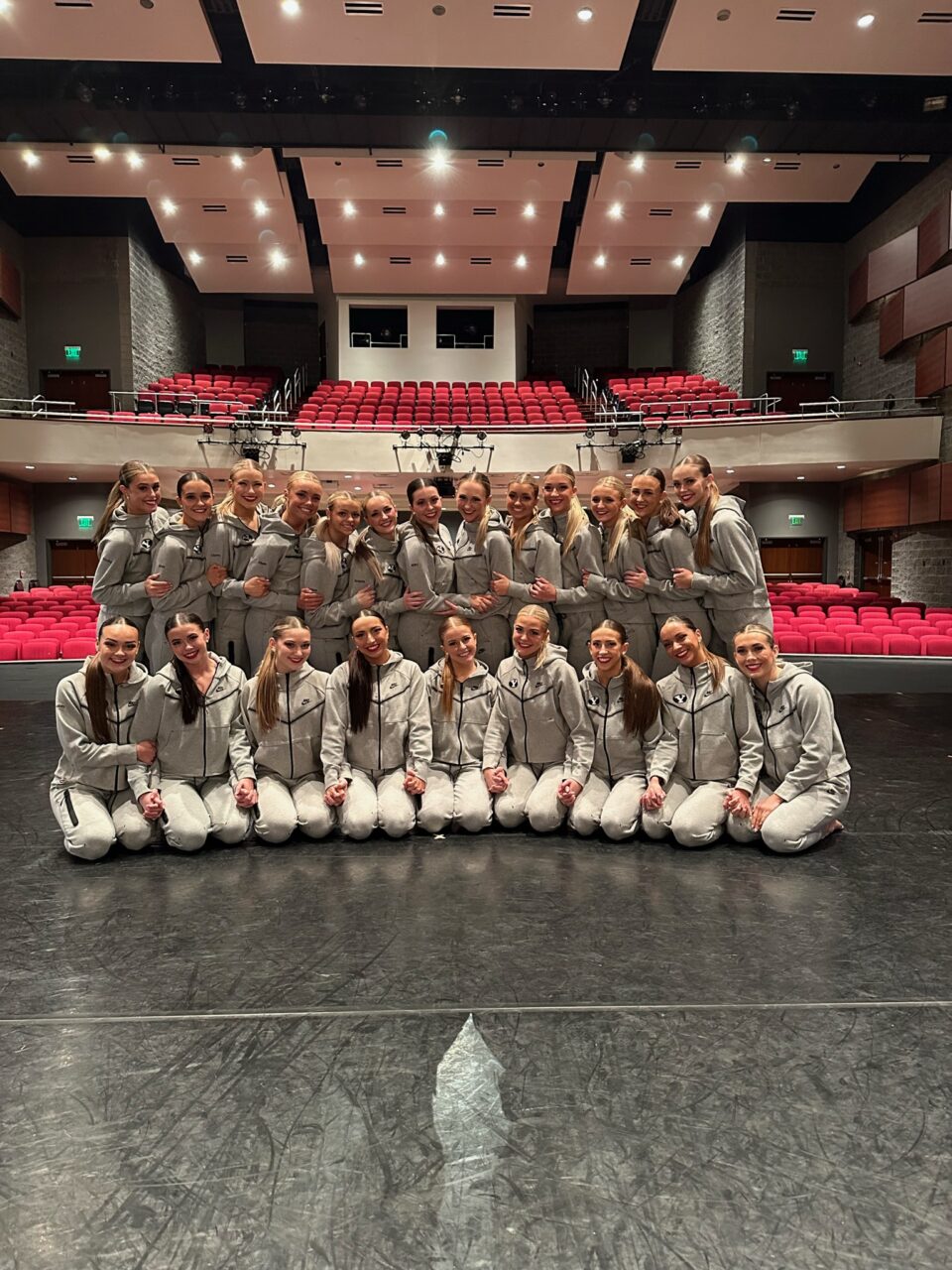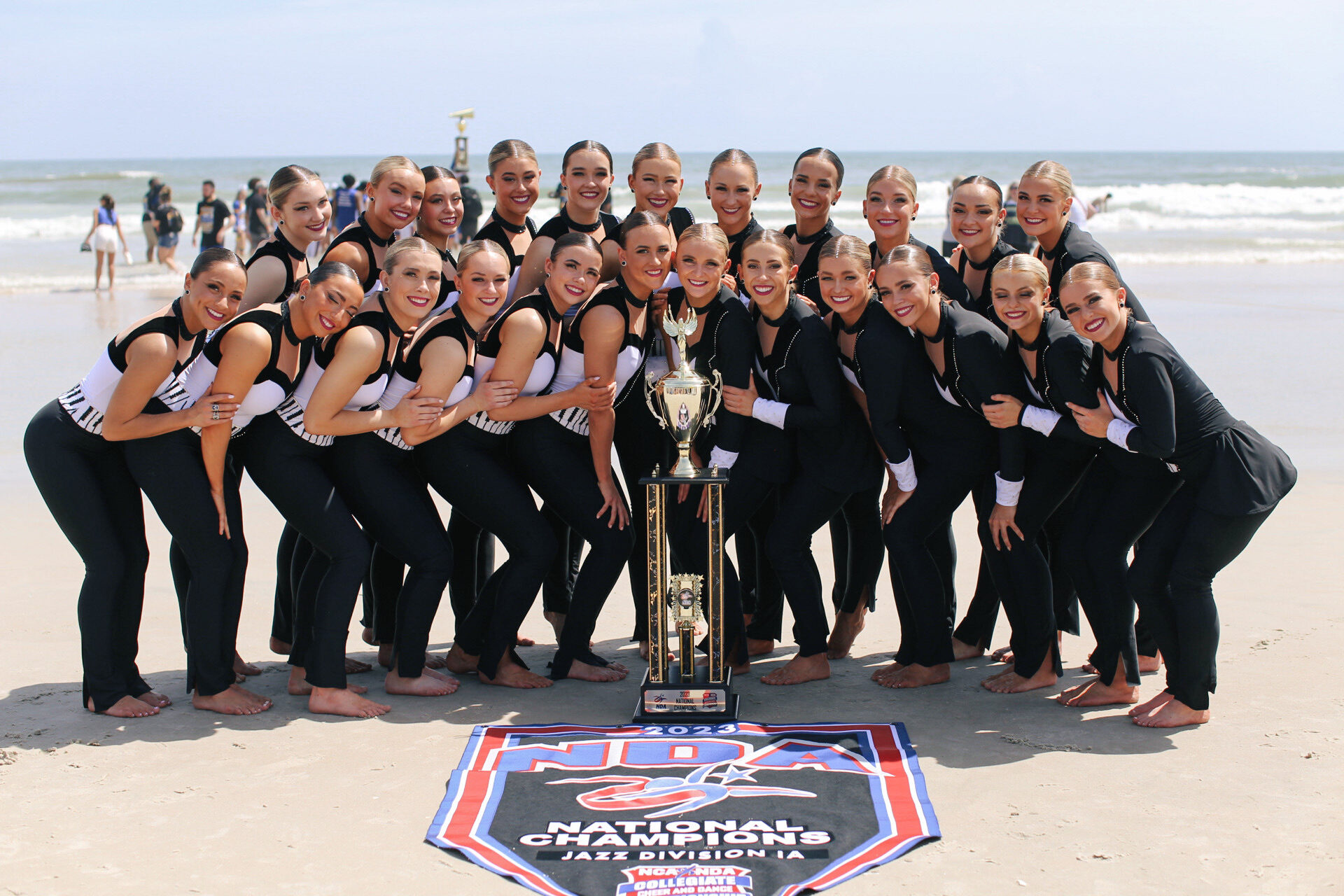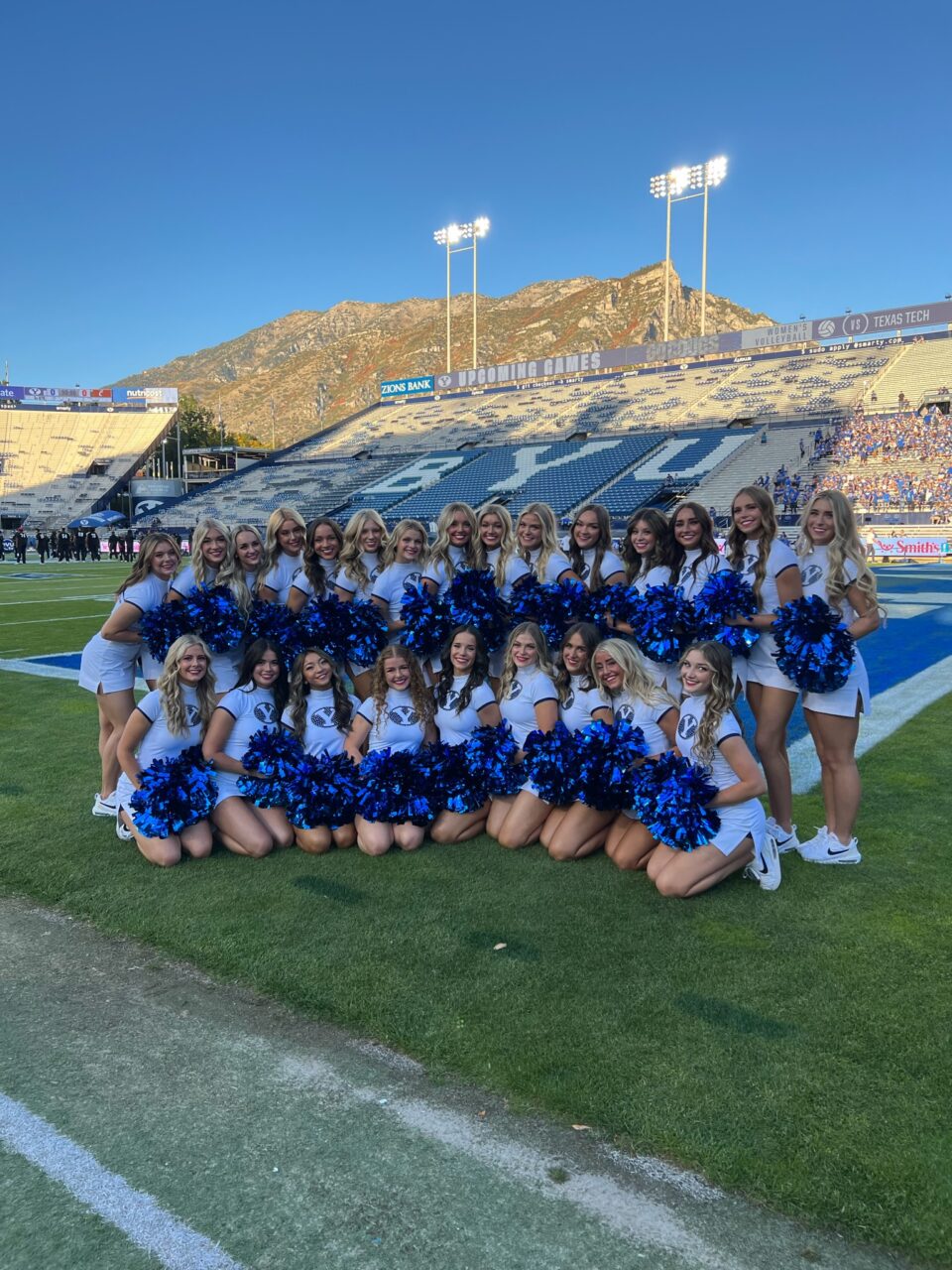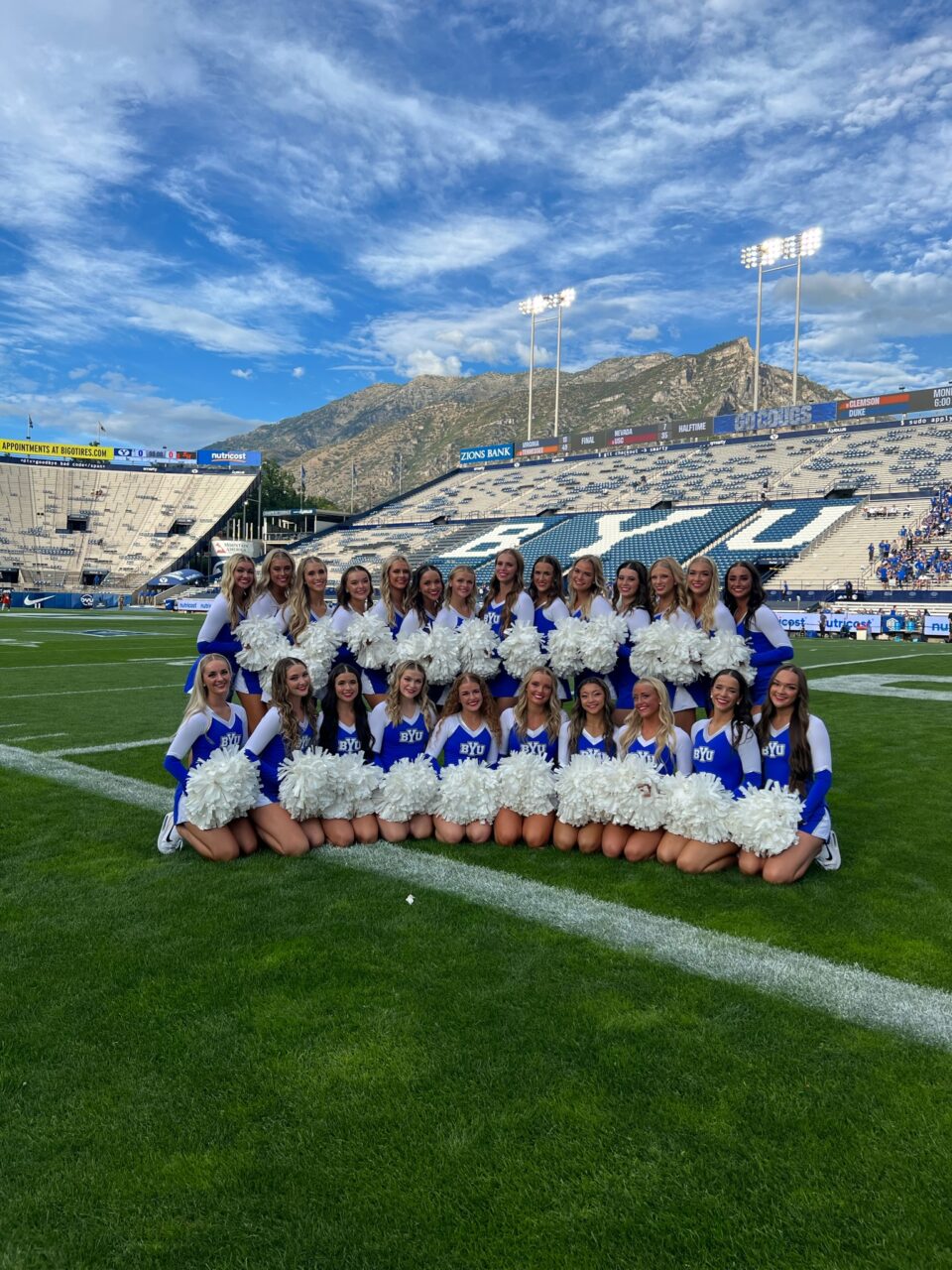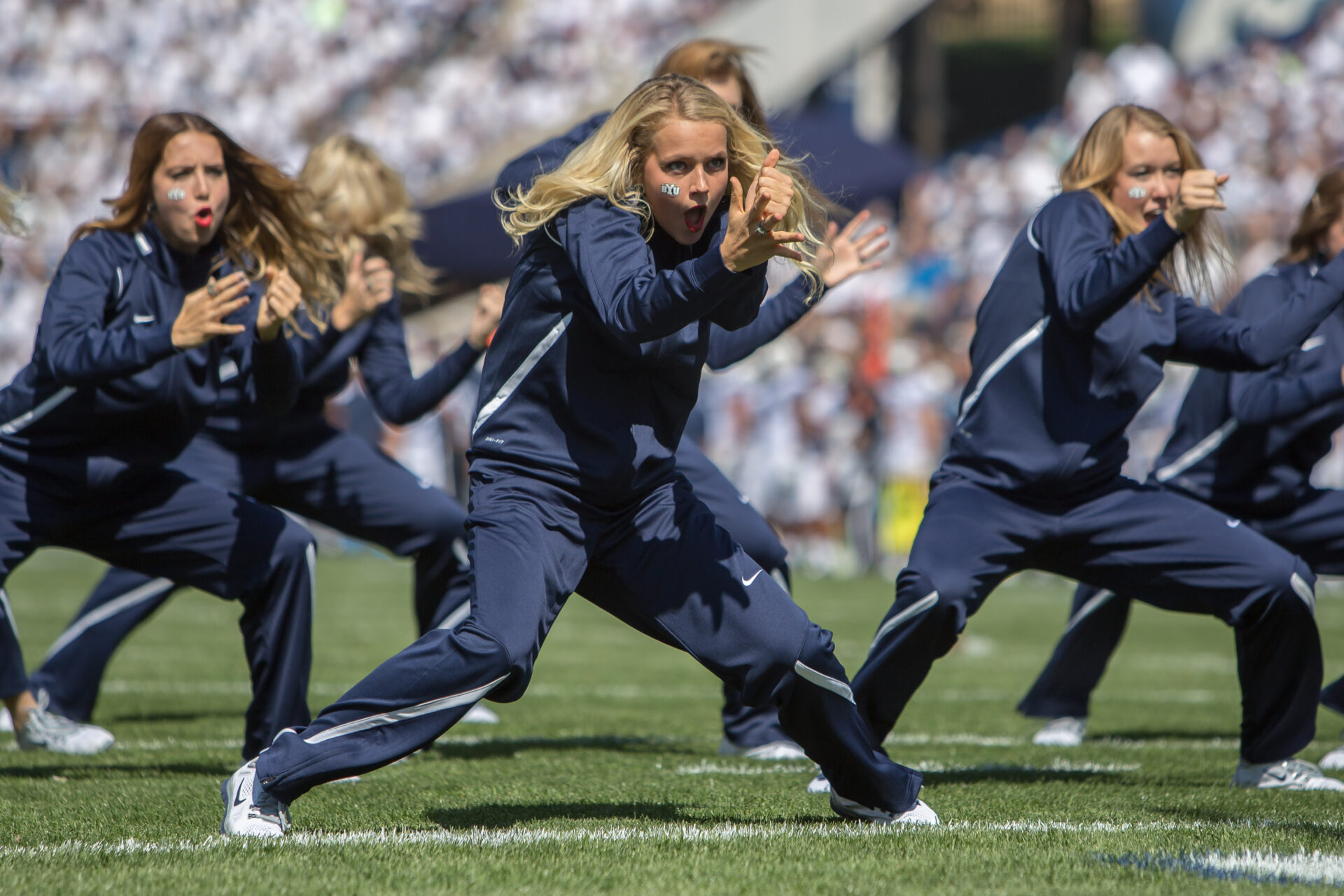
The BYU Cougarettes hold 24 national championship titles, the attention of 12 million viewers on a single viral YouTube video, and a four-night, five-show, sold-out concert each February.
Clearly the judges and crowds alike love the Cougarettes.
The current Cougarettes co-head coach, Stacy Bills, credits the longtime Cougarettes coach Jodi Maxfield with shaping the Cougarettes into the team that is known and loved today.
“As a coach, it’s just been rewarding to take an already incredible program and to try to make it our own, try to leave a little imprint in our own way,” Bills said.
However, the story of the Cougarettes began before Maxfield was even born. The team was formed in 1946, and it wasn’t a team. It actually began as a marching group.
Kristine Butler, a Cougarette from 1982-83, said dancing on the Cougarettes was a very different experience for her then than it is now.
“In the early 80s, there was a lot of kinda more jazz, marching, and things like that. The things they do today, with all the hip hop and stuff was not a thing back then at all,” Butler said. “We would do some marching formations and things. If you are familiar with the Rockettes, it’s kinda like the lined kicks and you’ll divide and then form back together,” Butler said.
Maxfield remembers her time as a Cougarette, from 1976-79, involved military marching, jump splits and iconic marching boots — images hardly associated with the Cougarettes today.
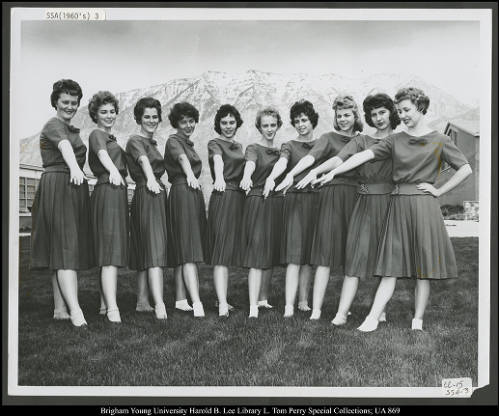

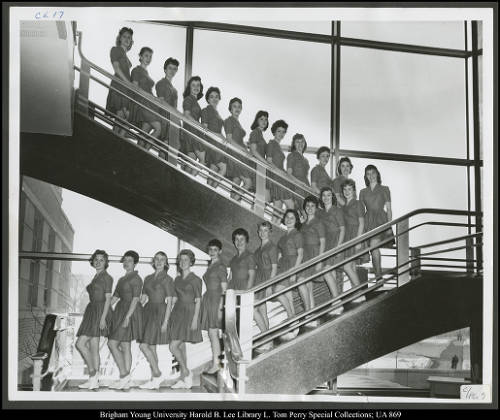
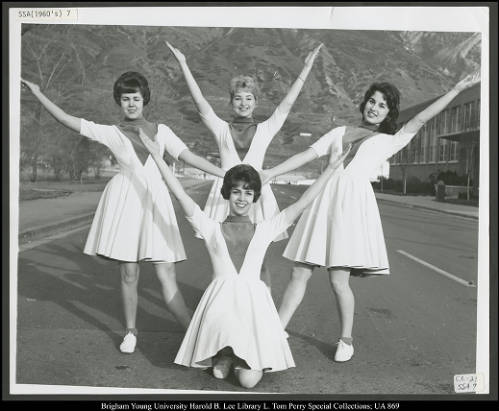
“Before I took over (as coach in 1990), they had already lost the boots,” she said.
Today the team competes in the categories of hip hop and jazz at nationals. Additionally, they’ve broadened their style to include contemporary, musical theater and tap.
The evolution of the dance style of the Cougarettes is a necessary part of all art, including dance, Butler said.
“I think just over the years, with any kind of art, you always try to expand and do different things or more unique things, and so I guess it’s kind of to have new things and different ways that you dance,” she said.
Maxfield credits the change to the need to always be better.
“When you’re the best, you’re the team to beat,” she said.
The team is expected to improve year after year, national title after national title, she said.
“We are expected to be perfect. That’s hard, because everybody can’t be perfect all the time, especially in a highly competitive world. There’s a lot of pressure and a lot of stress that you feel stepping onto the stage knowing that last year’s team was incredible and you’ve got to try and meet that level or be better than that level,” Maxfield said.
The team now holds 24 national titles, and Maxfield said every one of them was just as thrilling as the first.
The path to the national championships was the result of years of work by Maxfield. When she began coaching, she started a showcase where the dancers could perform and demonstrate their routines and skills. Simultaneously, she worked on increasing the team’s visibility by working the team’s way onto the football field.
“When I started, they sat in the stands with the band,” she said.
Maxfield knew if people could see the Cougarettes dance, the program would grow. She was looking for exposure and saw an opportunity, she said.
“I had this great idea. When the team scores, we’ll run down onto the field and we’ll do high kicks for every point that they score,” she said.
She advocated for the team, and over the years their role at football games grew and they replaced the song leaders on the field, entertaining the crowd and playing a role equal to the cheerleading squad.
As the team became increasingly well-known, their showcase overfilled the Richards Building Dance Theater, and was moved to the larger Covey Center for the Arts, becoming a full-blown dance concert where tickets would sell out night after night.
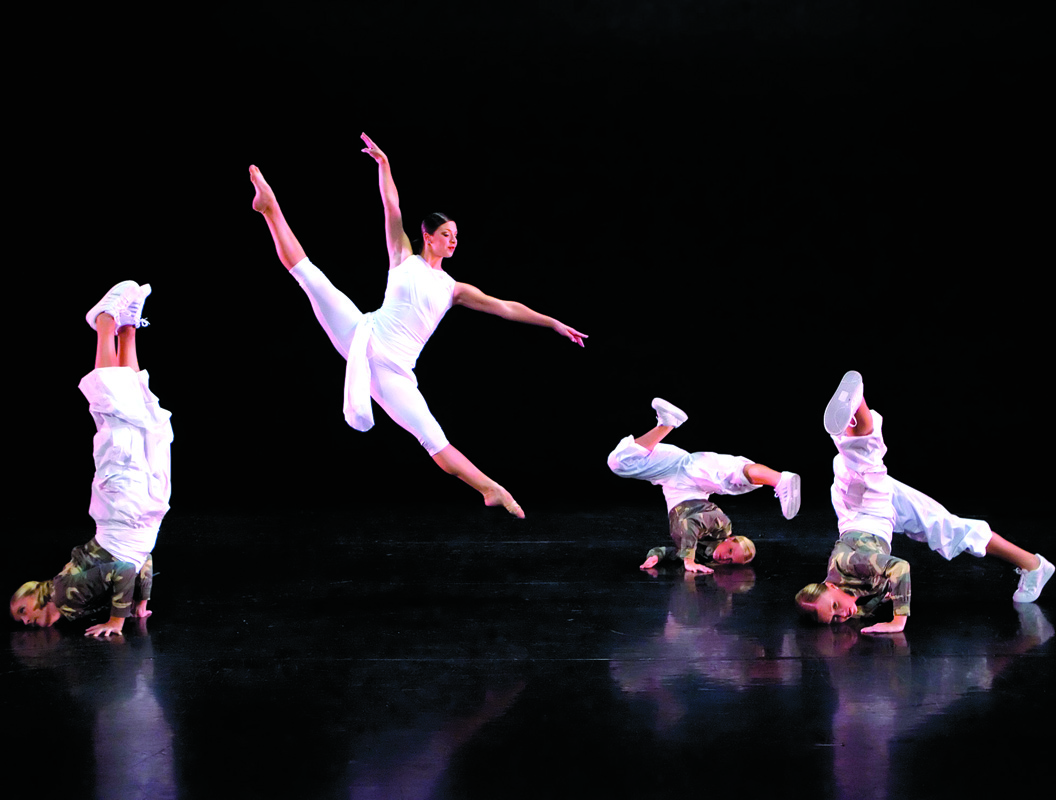
This wasn’t the only strategy Maxfield used to build the Cougarettes. Another turning point for the team was their first ever international tour. The Department of Dance head at the time, Phyllis Jacobson, helped the Cougarettes become involved with the backup ballroom dance team, which allowed them to tour China for 6 weeks in 1995.
The following year there was a new department head and the bad news was broken.
“They told me not to plan on touring internationally anymore,” Maxfield said. “I thought to myself, ‘What do you do after you’ve been on an international tour and now you’re being told you can’t do that anymore?’ So I looked into collegiate competitions, and that’s how we started competing.”
The first year the Cougarettes competed at nationals in Daytona Beach, the team took fourth place. The competition was not tailored to dancers, and their stage was carpet laid over a sand volleyball pit, causing a Cougarette to tear her ACL at the competition.
Maxfield expressed her concerns to hosts for nationals. The following year, changes were made and conditions were more suitable for a serious dance competition. The Cougarettes returned with a vengeance.
“That was the first year we won,” she said.
It was only the beginning of a string of victories for the team. Over the next two decades, the Cougarettes have amassed 24 national titles. Maxfield was either a coach or a choreographer for 20 championship wins.
The Cougarettes love winning. Rachelle McMullin, a Cougarette from 1999-2001, said her favorite moment as a Cougarette was winning nationals at Daytona Beach in 2001.
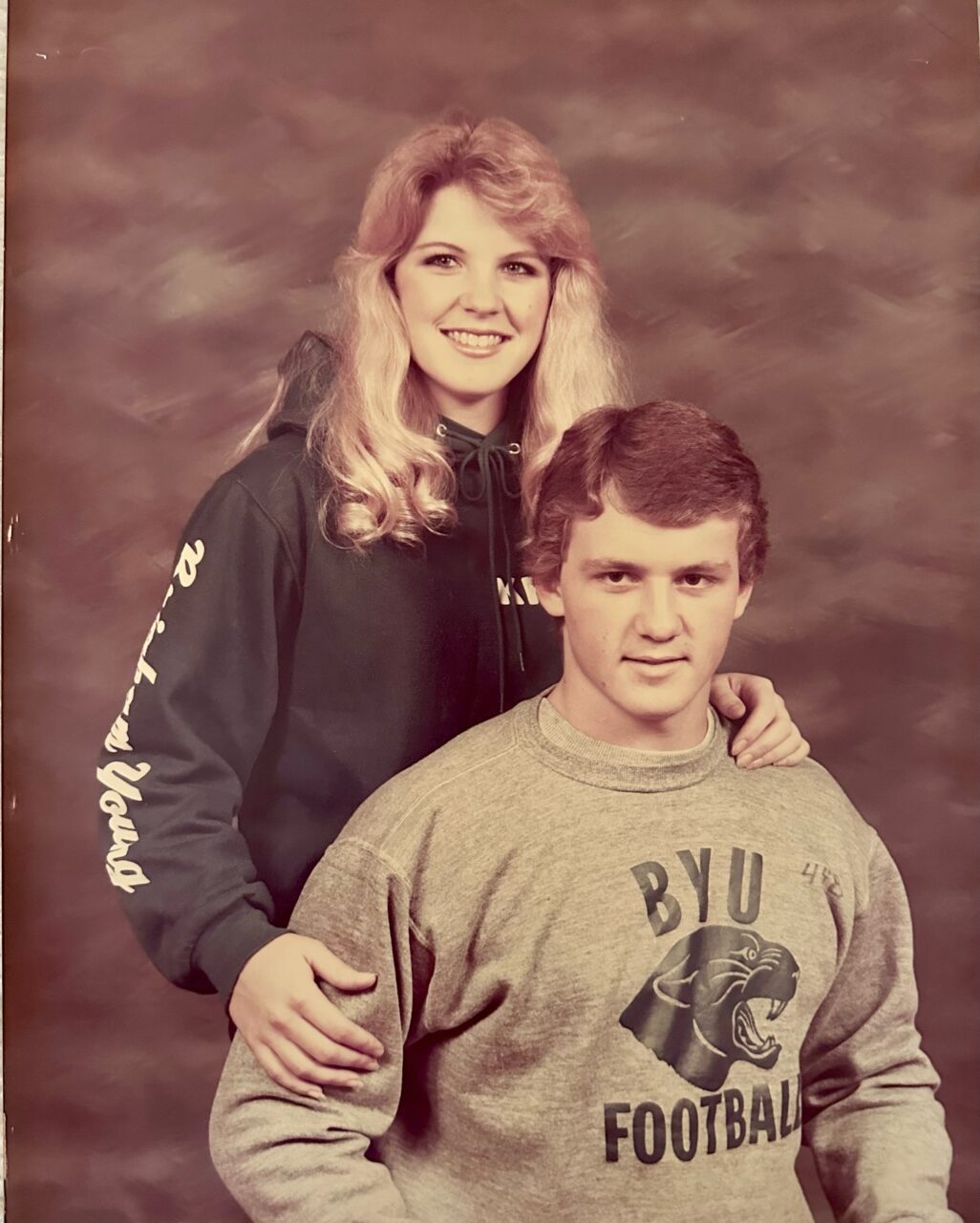
“I had never competed until I was on Cougarettes so it was a lot to take in. But those nationals trips were the best,” McMullin said.
Brynn Belka, a current Cougarette, said her proudest moment was winning nationals last year.
“Nationals is so hard, but it’s so rewarding … It’s stressful but there’s no greater feeling than feeling like you nailed the routine with everybody, and that you were united in one mind and one purpose. We ended up winning in jazz and in hip hop, and that was just such a cool experience, all the hard work had paid off and I loved it,” Belka said.
Bills, the current co-head coach of the Cougarettes, was first a captain on the team from 2000-2003.
“It taught me a lot and pushed me in all sorts of ways,” Bills said.
The nature of the team pushes dancers to excel in all types of dance, forcing them to be versatile, she said.
“Our goal is to push them to grow in all areas at their time in the program. A lot of our dancers leave and become incredible choreographers. They’re getting jobs, they’re really well trained, and they are able to move on from the Cougarettes,” she said.
Something she said she learned in her four years as a coach is to always have something new and innovative coming, a skill exemplified by Maxfield before her.
One of the innovations Maxfield introduced to the Cougarettes was Cosmo. She warned the team to prepare to be upstaged when Cosmo first danced with the Cougarettes, but no one could have predicted the wild success this collaboration turned out to be.
“It had a huge impact on our own social media. I think within a week of going viral with Cosmo, we went from 17,000 followers to 80,000,” Maxfield said.
Cosmo provides a fun aspect to the dance routines, Bills said. “The fans go wild.”
Although the program has changed and evolved over the years, the Cougarettes share a sisterhood.
“It’s a sisterhood that lasts forever,” Belka said.
Belka described the alumni dinner the former team members host for the girls around their concert week as something that keeps everyone in touch, which Butler said she attended.
“It was fun to connect with different ladies and gals over the years and talk about the different time periods everyone was in the Cougarettes,” Butler said.
The sisterhood extends to those who were in the Cougarettes at any time, alumni or current. Many of the former dancers said they still attend the Cougarettes concert every year.
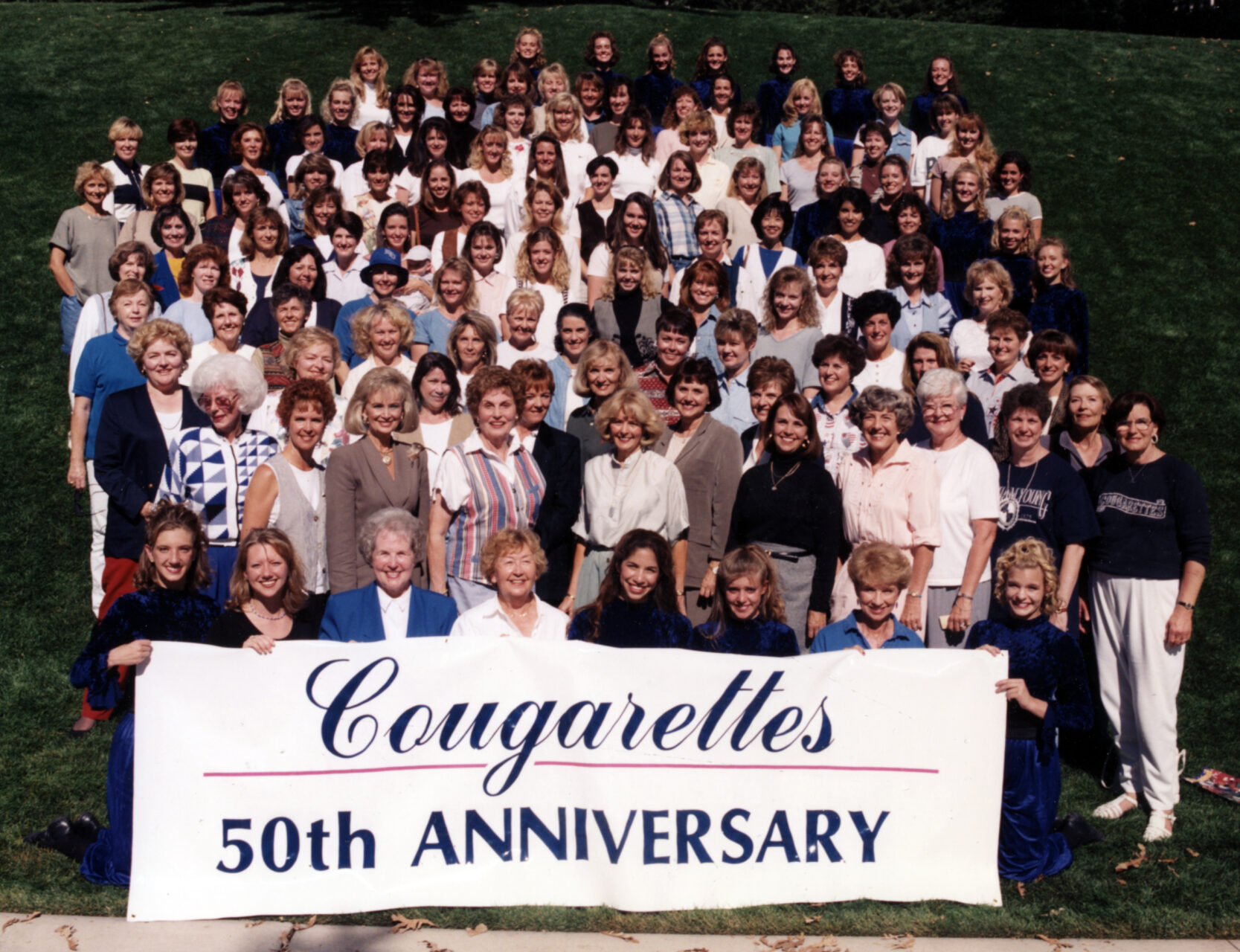
“We’ve had the chance to become friends with a lot of alumni. They laugh when they show pictures of the boots, the marching, the kicks,” Bills said.
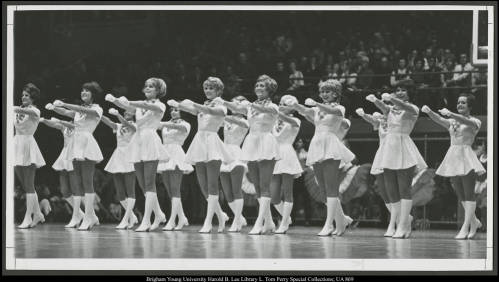
McMullin said she is grateful to have been a part of it during her college years and to carry those friendships on today, 20 years later. She described dancing with both current and former Cougarettes on stage at the 70 year reunion.
“I am still close with several of my Coug sisters and I love following the current Cougarettes. The thing I loved about being a Cougarette is the sisterhood it brought into my life,” McMullin said. “It’s really cool to be part of such a special group.”
As the Cougarettes each graduate and move on, the team keeps following them from afar, cheering on their successes, whatever they may be.
“Many stay in the world of dance professionally. Many are married, there are lots of young mothers with little ones. It is so fun to see them become mothers,” Maxfield said.
Some alumni are dancing with the Utah Jazz, others dance professionally for NFL or NBA dance teams, and a few even end up on Broadway or with the Rockettes.
“Emery Wride, the captain in 2020, is dancing this year as a Radio City Rockette. I was able to watch her on opening night … It just makes me so proud. It doesn’t surprise me, because I know the talent that is on this team. If they choose to, they can go out and do what they want and be successful at it,” Maxfield said.


